There’s something unique and strangely interesting about fly fishing for bass. Maybe it’s the fact that you’re pairing an incredibly technical way of fishing against one of the most difficult to fight fish in the freshwater. Perhaps it’s the fact that a lot of anglers don’t realize that they’re missing out by never fly fishing for largemouth bass.
If you’re a serious bass angler and you feel your fishing is getting a bit stale, throwing some flies out there is a great way to change things up and add some new excitement to your trips. In this guide, I’m covering every single thing you could want to know about bass fly fishing from the gear to the bass fishing techniques and everything in between.
Bass Fly Fishing Setup: What Rig to Use?
Each bass angler knows that they put up a heck of a fight, and you need to prepare yourself with the right equipment. This includes having the best fly line for bass fishing and the right baits. Bass are opportunistic predators, which means they’ll take advantage of any opportunity that comes their way even if they aren’t feeding.
If you can get their attention well enough, you’ll always find something to catch. The main challenge that people have is casting where the bass are located. They like to hide in the muckiest and most well-covered locations on the water, so it’s a challenge to get out there and find them.
In this section, I’ll break down all the gear you need based on the situation and provide some tips on how to use it best.
Best Fly Rod For Bass Fishing
Let’s take it from the top and talk about the rod you’ll need. Fly rods come in sizes ranging from 5-8 weight and higher, but you won’t have to worry about that with bass fishing. Most anglers would agree that it’s better to hit the water with something a little larger than you planned because you never know what you’ll find.
I’d suggest going with a 6 weight fly fishing rod, and don’t worry too much about the specifics on the rod or the brand because almost all of them function the same.
Choosing a Reel
For your reel, I would go with a disc drag reel and match the size of it to the size of your rod. The disc drive is my ideal choice because you get a better drag system that gradually resists at a more consistent rate when the bass is pulling you across the pond.
Your other option is called a “click and pawl,” which requires you to essentially choose the amount of drag and turn it on and off. At the point when you hook a bass, you’re in for whatever the setting is no matter what the situation. With the disc drag, you have a bit more flexibility.
Best Fly Line for Bass Fishing
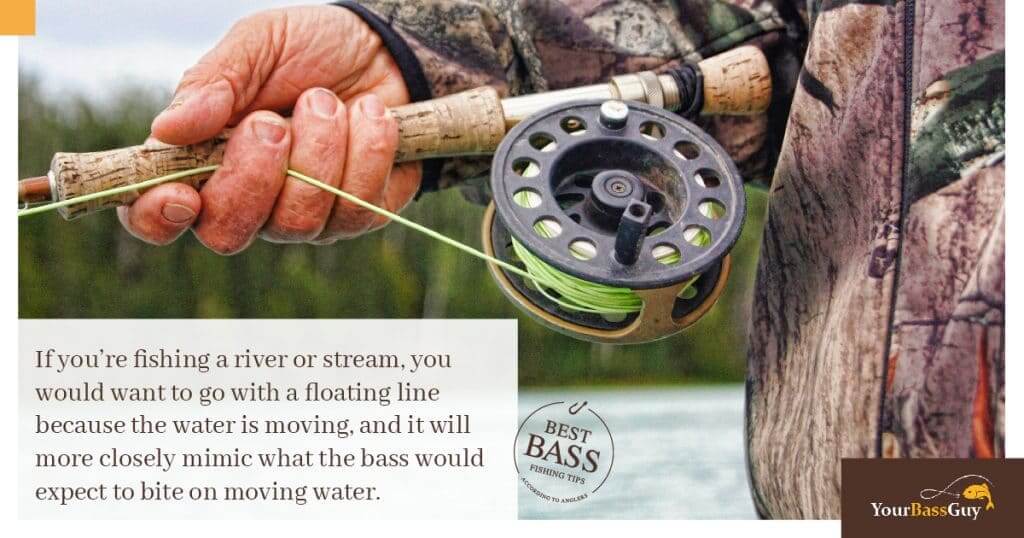
When we get to the fly line is where things get complicated. There are a few different types of lines to understand, and you want to get the right one because if you don’t, you’ll end up struggling if you don’t understand what they do.
You have floating lines, intermediate, and sinking lines. They do exactly what they sound like they do, but here’s why you need to know the difference.
If you’re fishing a river or stream, you would want to go with a floating line because the water is moving, and it will more closely mimic what the bass would expect to bite on moving water. If you’re fishing a pond with a lot of weeds and you’re casting near cover, you might want to go with a floating line or intermediate.
When casting around changes in structure or drop-offs, you’ll want to use a sinking line because it will drop quickly. It’s also important because you need to match up the right line with the type of fly you’re using. If you have a sinking fly with a floating line, it will screw up the presentation.
Floating Line
The floater is what you’ll see most commonly because many people use this in shallow water. When you’re fishing a river or right along the shore, this is what you’ll use. Bass hang out in shallow water that is less than six feet, so a floating line will work the best when creating a shallow surface presentation.
Intermediate Line
Between six and ten feet deep is when you’ll roll over to the intermediate line. These are clear lines that sink slowly, so they work excellent if you’re cruising along a drop-off or fishing around shallow weed beds. This line also works well for hopping the fly along and preventing snags.
Sinking Fly Line
These sink incredibly fast at a rate of six to ten inches per second. If you need to bang around the bottom of the water along a rocky shore or dam, this is the type of line you’ll want to use. When there is underwater structure or fallen trees, I’d suggest using this line and dragging right along it.
Using a Leader
Many bass anglers may have never used a leader because it’s not typically necessary. With flies, you need to use one, and the choice you make depends on the type of fly you’re using. For example, for a streamer, you would want to use a 4×7.5 leader, and you could put a tippet on that as well.
You should never need to go any longer than nine feet or shorter than five. I would stick around with the 7.5-foot option. Leaders also have something called breaking strength, which is the amount of pressure you can put on it before it snaps. In most situations, you should be fine with a six-pound leader when you’re in open water or even around shallow weed beds.
What are the Best Fly Fishing Flies for Bass?
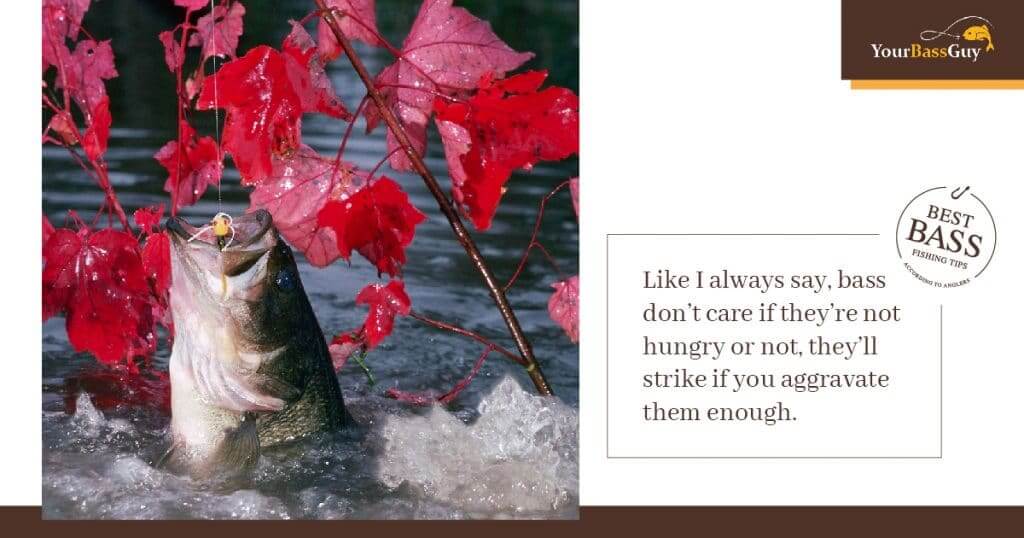
Now that you’ve got everything rigged up, let’s talk about the best flies and the options you have to choose. There are a few different types of flies:
- Poppers
- Streamers
- Weighted Flies
- Jig Style Flies
There are more options than these four choices, but these are the ones we’ll focus on for bass fishing.
Poppers
Some people call them poppers, and others call them gurglers. Whatever you call them, these are the small flies that create a loud disturbance when they hit the water. They have a cup design on the front that makes a splash each time you throw them out, and when you tug them back.
The idea here is to cast around vegetation and create the appearance of a flying bug landing on the water and making a heck of a lot of noise. Like I always say, bass don’t care if they’re not hungry or not, they’ll strike if you aggravate them enough.
You want to cast as close to the structure or cover as possible. Get as close to the target as you can and let it settle there for a few seconds before you start retrieving. Patience is important when fly fishing for bass because it might take them a few seconds to sniff out the situation.
I would suggest deploying a slow retrieval with a few short jerks and pauses while always keeping the fly in the strike zone.
Gurglers are a bit different than poppers because they create the presentation on the ride back to the boat. They’ll roll near the surface of the water but slightly under while creating a bubble trail on the way back. This disturbance is highly attractive to bass because the action isn’t as loud and intimidating as a popper. These work great when the water is nice and calm.
Streamers
Streamers work best when you’re fishing the middle of the water. These are the situations I was speaking about when I said you’ll want to fish around six feet in depth with an intermediate line. It’s important to have the right line to go along with these flies so you can stay where you need to be in terms of water depth.
These are much more realistic and they look a lot like baitfish with an appearance similar to swimbaits. If you aren’t sure where the bass are these are a solid choice because it will help you scope out a lot of water much quicker than if you were hitting the surface over and over.
You’ll want to use a faster retrieval for this and see what type of attention you get. I would suggest taking these around underwater structure and dragging them near stumps, wood, and other fallen items.
Weighted Flies
These are something you won’t find too often in fly fishing but they’re highly useful for bass fly fishing. They have a hook turned in a way that keeps it weedless like a Carolina Rig so it’s ideal for casting into heavy vegetation and cover, which is where you want to be. If you find yourself in a situation where you can barely cast beyond the slop, you’ll want to use these.
Many of the other fly choices will get hung up really easily if you’re not casting in open water, so that’s why I highly recommend this option when fly fishing for bass.
Jig Style Flies
The last choice worth mentioning are jig flies, and they have a similar design to the weighted ones. They have weed guards and weight that allows you to get to your strike zone fast, and you can also move them through the slop without having to worry about bringing everything with you.
You’ll want to cast these a bit beyond your desired area and let them sink. Once you’ve reached the right depth, start retrieving through the zone, and this where you’ll get most of your strikes. You’ll be fishing a bit deeper water than you would with most of these flies, so pay attention to your line.
Where to Fly Fish for Bass: Where to Find Them?
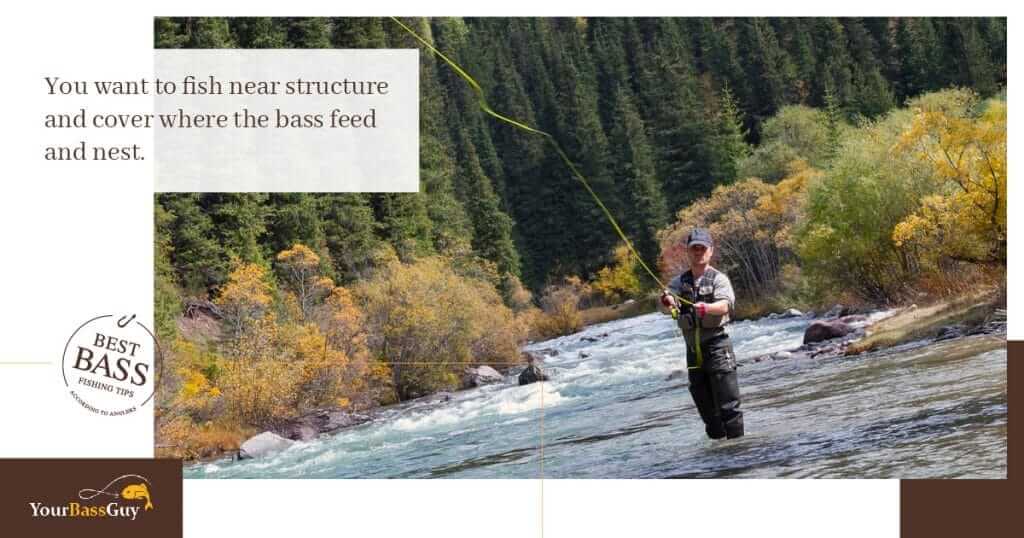
I’ve talked about this quite a bit in many of my other articles, but finding bass is rather simple when you understand a few things. First, each body of water is different, so if you’re fly fishing for the first time, this isn’t the time to go and experiment with new waters. You might discourage yourself or get frustrated doing that.
Go somewhere that’s familiar to you and where you’ve caught some bass before and deploy this new technique there. You’ll still use the same strategies I’ve always talked about. You want to fish near structure and cover where the bass feed and nest.
Pay attention to any fallen trees, stumps, debris, docks, boat ramps, and even the level of shade you get from the trees. Bass will commonly hang out in these areas, and all of these require the same technique.
When you’re fishing around the weeds, I would use a weedless fly like the weighted or jig options we talked about above. If you can find areas where the weeds drop off into the water, this is where you want to cast. That drop off means a change in the base of the water body, which is the number one place to find bass.
If you see any abnormalities in the weeds cast there as well, but be careful not to drag your fly too much through the weeds because it will ruin your presentation.
Fly Fishing for Smallmouth Bass in Rivers
I’ll be honest, I think fly fishing for bass in the river is hard. It’s a challenge and not something I’ve always enjoyed. I have had a few bad experiences with river fishing, and ever since, I’ve stayed away from it. The good news is, you don’t have to follow in my footsteps. There are a few quick tips I have when you’re fishing in a river.
- Don’t stress the perfect cast – We always want to get the cast perfectly right, and it doesn’t happen that way. If your fly is in the water, you’re doing good.
- Cast with the wind – Backlash is a serious issue because you need to remember that you don’t have much weight at the end of the line. As a result, casting relies entirely on the inertia you build up on the backcast. Do yourself a favor and cast with the wind.
- Take a systematic approach – Again, now is not the time for new stuff. Focus on getting the cast right and finding the water at least close to where you planned. Repeat the process over and over until you get it right.
- Look for still water – While you can catch plenty of smallmouth bass in the current, you still want to focus on still water as much as possible. Their behavior requires a different approach than trout fishing.
- You can catch big bass – Most people think that this type of fishing limits you to catch bass that are less than two pounds. Catching bass that are five pounds and up is possible for fly fisherman using dry flies, bass bugs, and plenty of other options as well.
Bass Fly Fishing Techniques
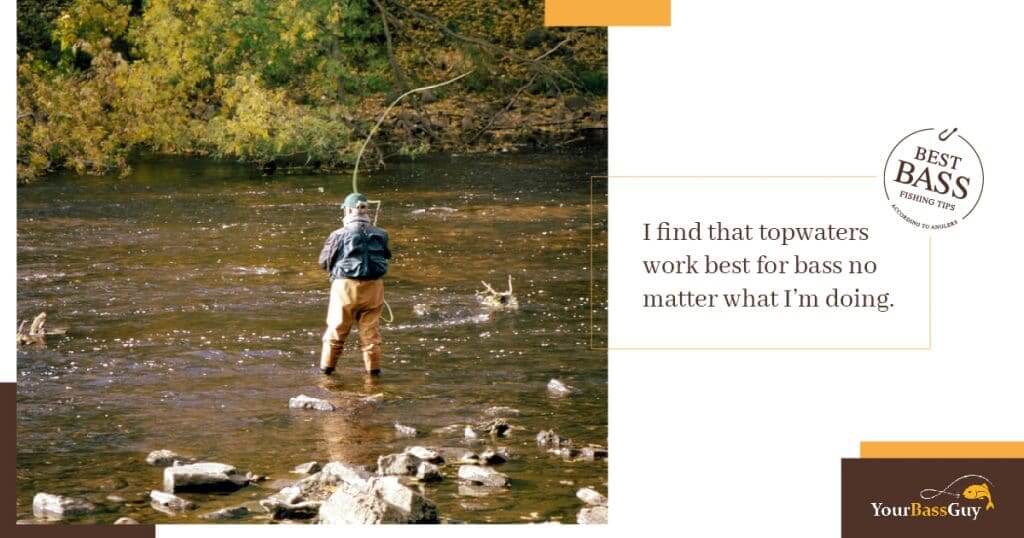
As with all other types of fishing, the technique you use focuses on the type of lure you’re using. Let’s break down the three most common fly fishing for bass techniques and see what appeals to you the most.
Topwater
If you’re fishing the top of the water, you’re likely going to play around in shallow areas. This is the ideal choice for most bass anglers, and I fish this way as well. I find that topwaters work best for bass no matter what I’m doing.
I’d rig up a popper and cast it into open water around weed beds and heavy slop. Don’t cast directly into the slop because you’ll get hung up and end up pulling in a ton of crap you don’t want.
Remember to cast near the vegetation with topwaters, and you’ll want to pop them on the way back to the boat.
These come in a variety of colors, but you want to mimic your surroundings and take into account the time of year. The best time to fly fish for bass in the dead heat of summer in the early mornings, late evenings, and right at nightfall..
That said, you’ll want to use a brightly colored fly when the sun is hot and high and a more neutral color when it’s overcast.
Diving and Retrieving
Streamers are another choice when fly fishing for bass in lakes. These are fished around mid-depth, and they mimic a minnow, so the style is similar to fishing with a swimbait. For these, you’ll want to cast them out and let them dive down a bit to the desired depth.
They sink slowly, so you’ll have to wait a few seconds and use a bit of patience before you start bringing them back.
On the retrieval, they usually rise up if you keep the tip of your rod in the air. You want to prevent that by keeping your rod tip pointed down towards the water and almost in it. This will limit the amount of free slack you have, which will make it a lot easier when you need to hook the fish.
Bottom Fishing
Jigging or weighted flies are the ones you’ll want to keep towards the bottom of the water. These sink quickly to reach the bottom as fast as they can, and they work great at enticing larger bass that might not jump at every opportunity you present them.
For this strategy, you’ll want to size up the line and fly a little bit to appeal to the size of largemouth bass you’re trying to find.
Bass Fly Fishing Tips
Here are some final tips to get your going. These will help solidify everything you know and increase the chances of you having success on your first trip.
What Time Is It?
You need to fish during feeding periods because you don’t have the flexibility of having 18 different lures with multiple presentations, sizes, and colors. You’re limited with flies and as a result, you need to fish when the bass wants to eat. That means fishing during sunrise during the summer and near sunset.
Point It Down
Remember that fly fishing requires you to break some habits. As bass anglers, we love to jerk our rod around like crazy on our retrieval, and every time we feel the smallest nibble. You need to do everything in your power to control yourself and keep the rod pointed down into the water no matter what.
When you finally do have a fish on, you’ll strip back on the line and apply some side pressure but never pull the rod up.
Take Breaks
Pausing is good. Why is it that most of the strikes happen when you’re not stripping or paying attention? It’s because you took a break to allow the bass to feel out the situation. Stop every now and then and let them track it down, sniff it out, and then when you start retrieving again is when you’ll get the strike.
Taut Is Always Good
Keep in mind that this is essentially a highly finesse style of fishing that relies on technique and attention. You need to feel each and every nibble otherwise, you’ll never catch anything. The strikes might be subtle sometimes, so if you’re fishing anything that’s not on the surface, make sure the line is always tight.
Switch It Up
When fly fishing for bass in ponds, you might find that a rubber worm works better than the fly. I’ve seen situations where anglers tell me to not even bother with most of the “new generation” of flies because they’re all plastic and rubber anyway, so the bass don’t bite them. Consider looking into some newer and more alternative ways to fly fish.
Final Thoughts
I hope this guide helps up your fly game and enables you to get out there and catch a lot of bass. Fly fishing is something that a lot of people don’t understand, or they think it’s too hard, so they bypass and miss out on a lot of enjoyable fishing.
As I said, it requires you to change your mentality a little but the same goes for all fishing styles. Whether you’re fishing saltwater or freshwater you need to use certain strategies. Use the tips and tricks in this article and you’ll be good to go!

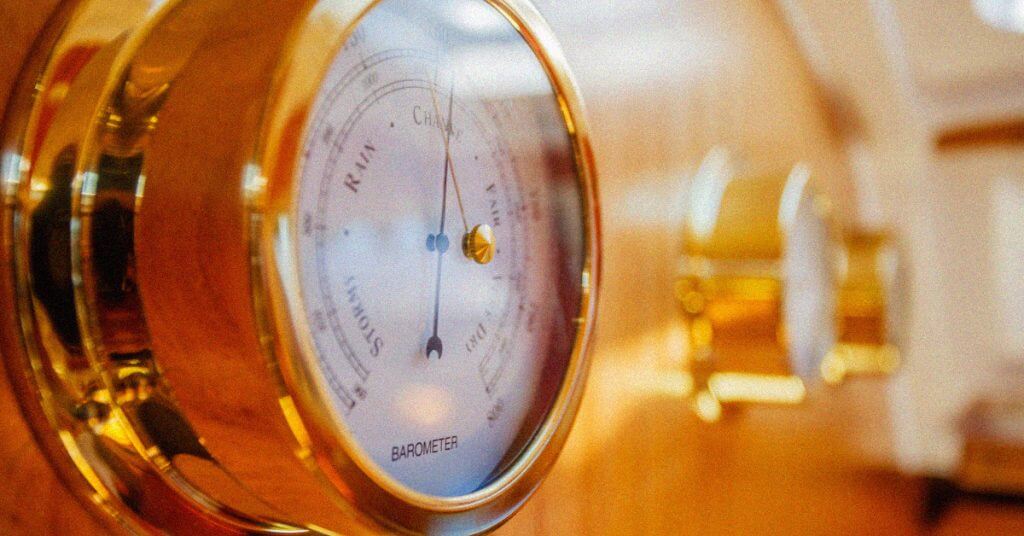
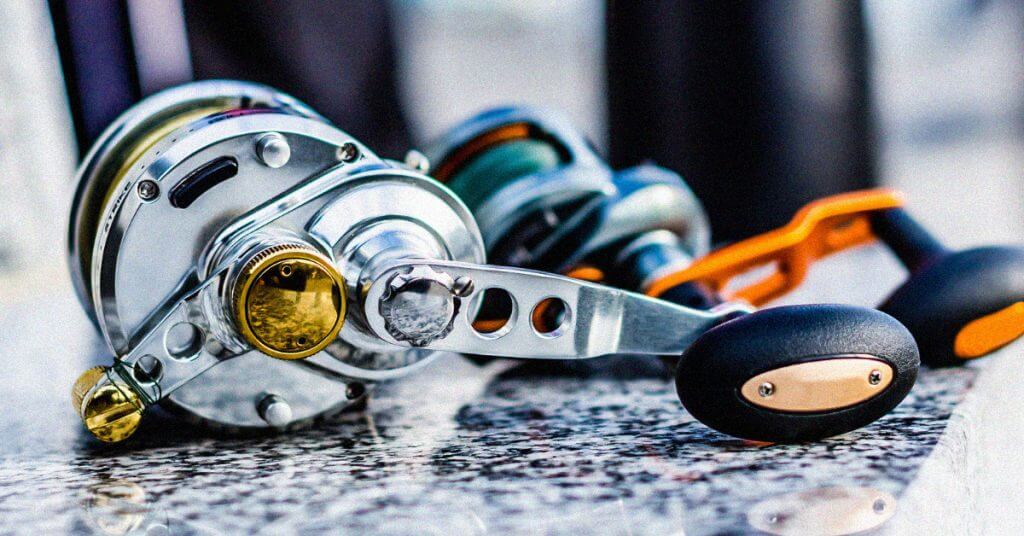
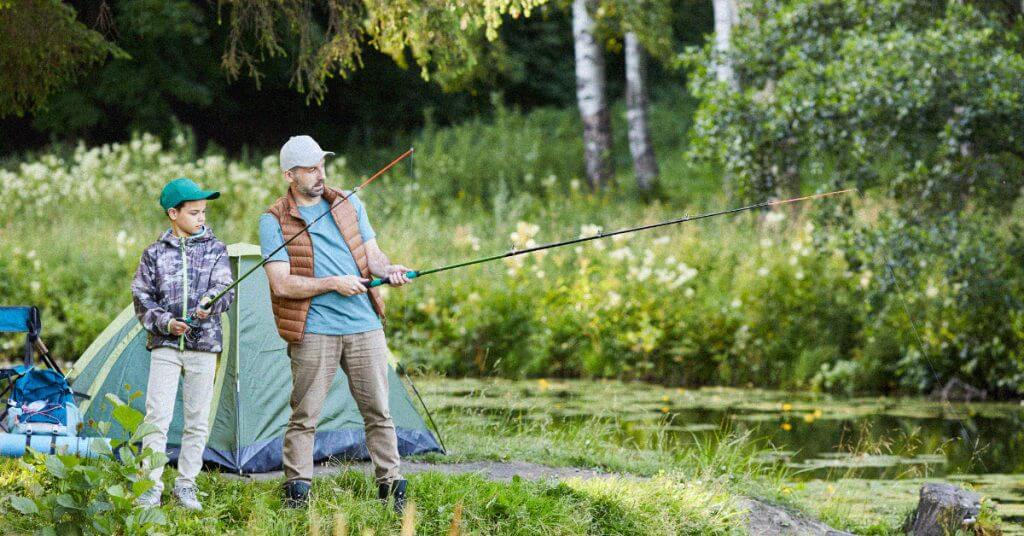
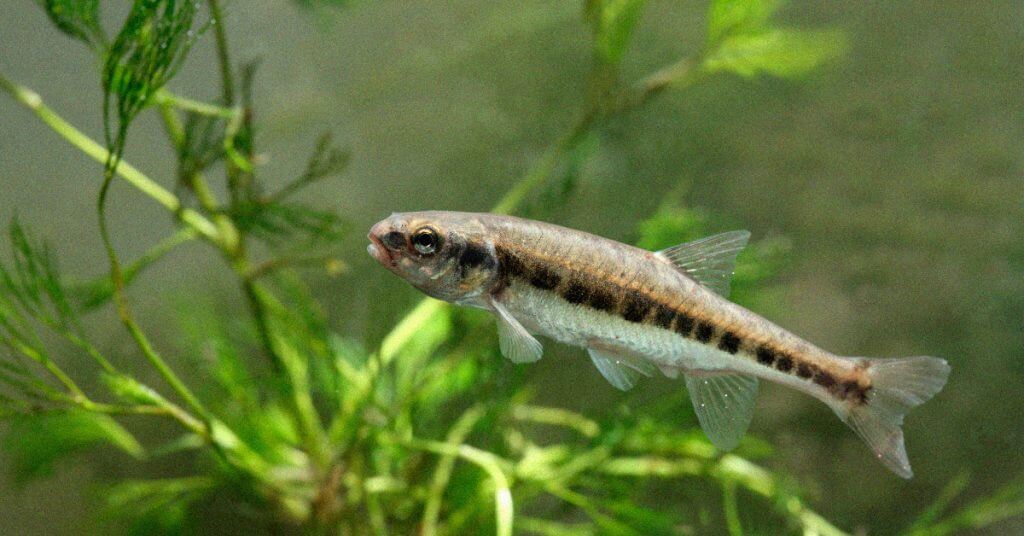
Great read pal! Keep it up man!
Thanks Sean! We’re not stopping any time soon! 🙂